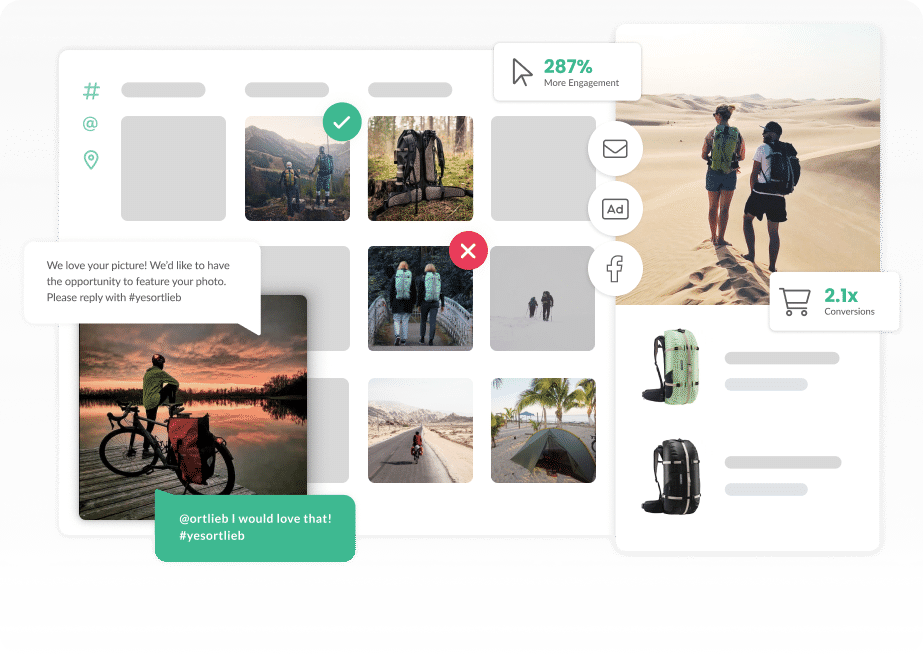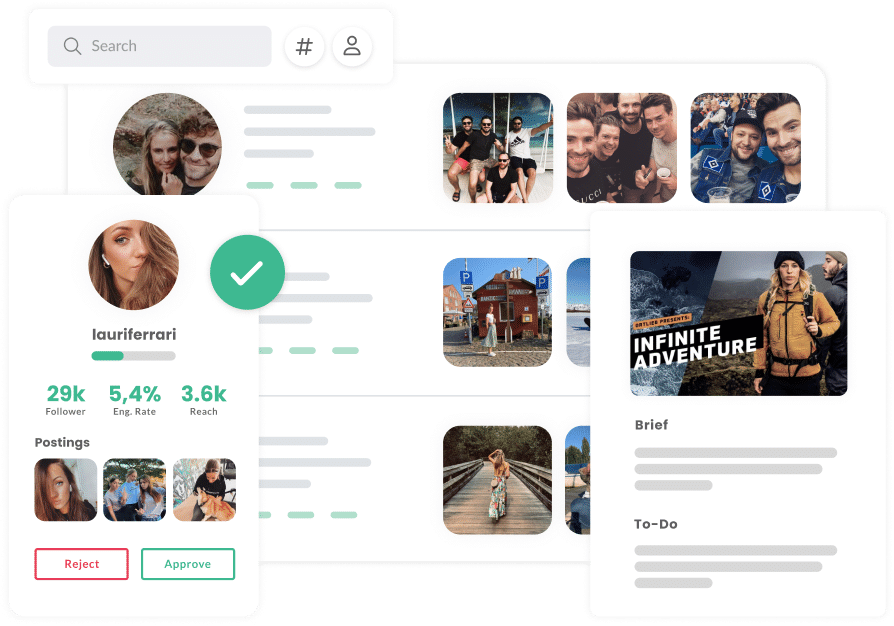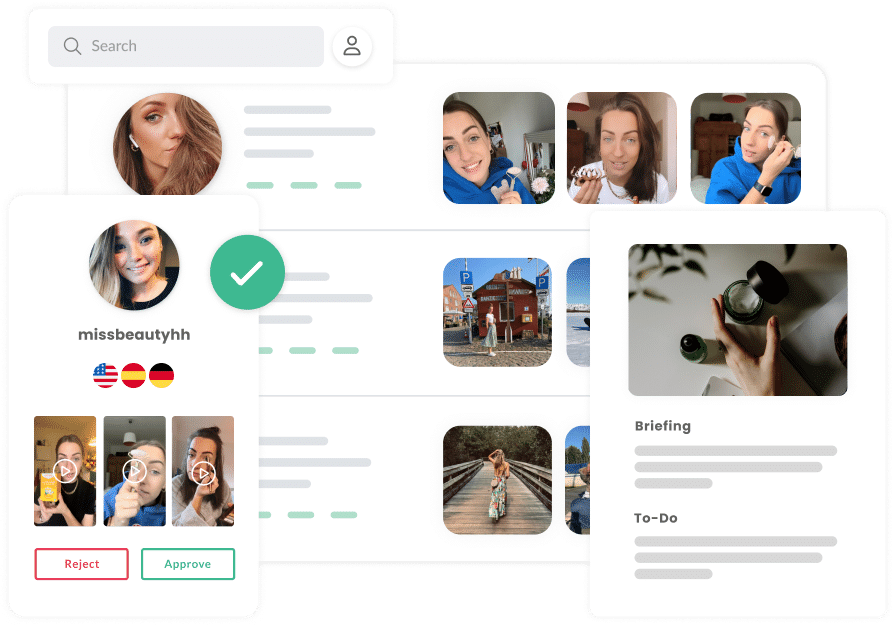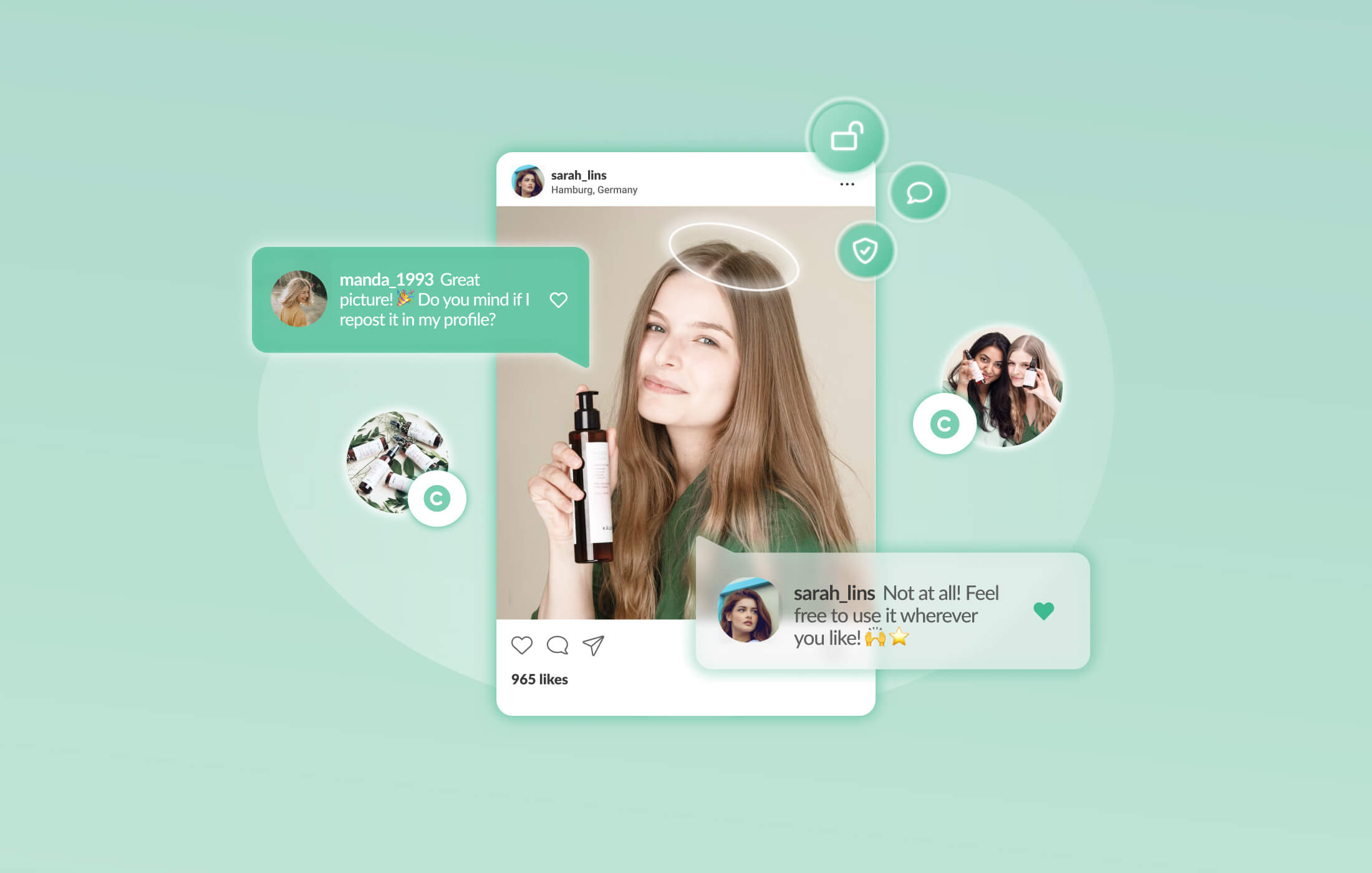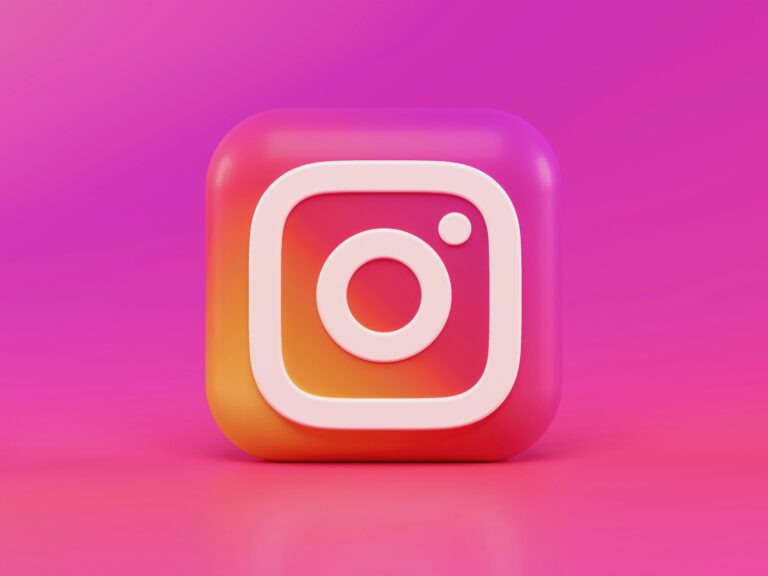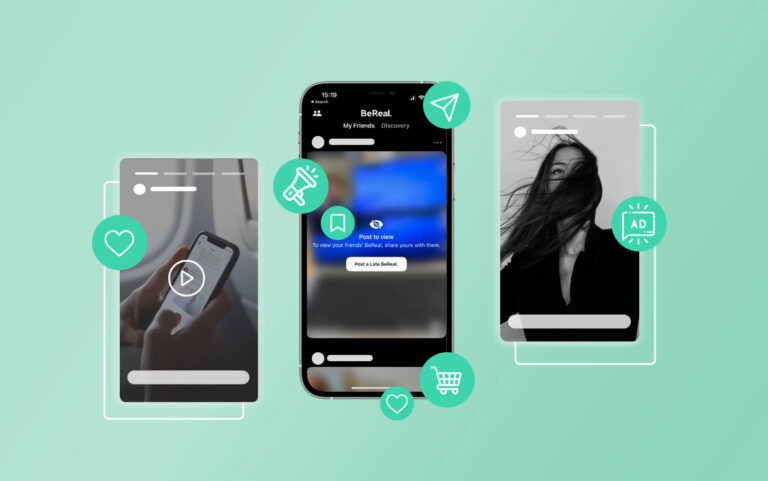Visual content is and remains king on social media – and not only quantitatively, but also qualitatively. Because images, videos and the like not only stay in people’s heads longer, they also improve general understanding of texts and other complicated information. It’s clear that marketers want to use this valuable visual Social Content for themselves. Now the only question is: Which images are you allowed to use? And in which cases do you run the risk of violating image rights on Instagram, Facebook and other social networks? This article shows you what you should pay attention to when publishing photos and videos and how you can avoid legal pitfalls.
What are image rights?
Image rights are a fairly general and comprehensive term. This is why we have broken down the most important image rights for Instagram for you again in the following list:
Copyright
If you have created a photo, video or similar yourself, copyright law grants you the sole right to distribute these creative works. In plain language, this means that if you have created an image, you alone decide whether and to which extent this image may be published, reproduced and adapted. Images and other visual content are always protected by copyright, whether they are professional shots or those blurry photos from your last vacation.
Right to one’s own image
According to § 22 of the German Art Copyright Act (KunstUhrG), the right to one’s own image states that images may only be distributed and published with consent of the person depicted. If a person is clearly visible in a photo or video, you as the creator need the explicit approval of this person for distribution and publication of that content. Exceptions to these regulations are according to § 23 of the KunstUhrG (see laws on the Internet):
- Portraits from the field of contemporary history
- Photographs in which persons appear only as an incidental feature next to a landscape or other locality
- Pictures of meetings, processions or the like in which the persons depicted have participated
- Portraits that are not made on commission, provided that the distribution or display serves a higher interest of art
In these cases, explicit consent of the persons depicted is not required.
Image rights on Instagram
Image rights on Instagram thus include not only copyright, but also involve third-party rights such as the right to one’s own image. If you are the creator of the posted content or have an appropriate license to use the content, that’s a good start.
However, this is not the end of rights that need to be considered for a post on social networks such as Instagram: In addition to the more familiar right to one’s own image, various other rights must also be complied with. These include, for example, house and property rights of museums and other buildings or trademark and design law. Here, however, the individual case decides whether or not these rights must be followed for the specific content piece.
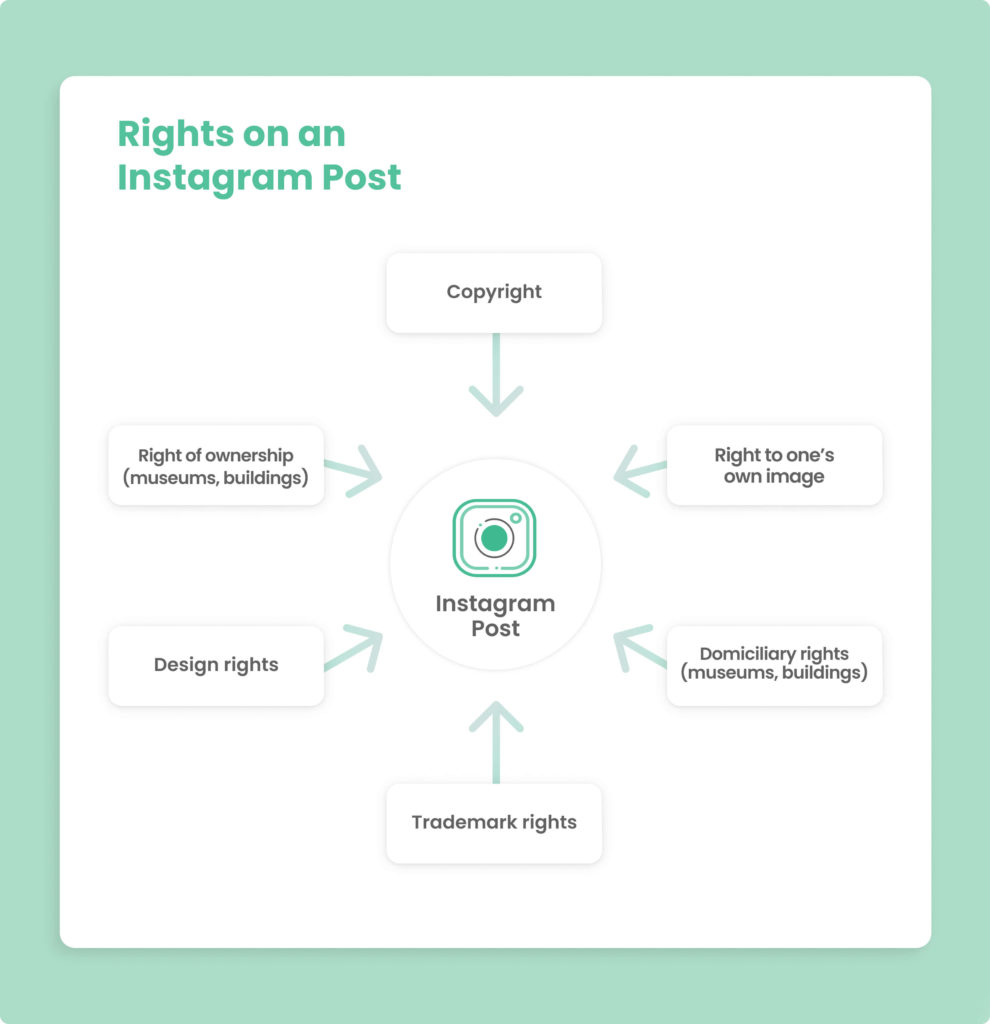
Who has the copyright on Instagram?
After clarifying which rights are relevant for images and videos on social media platforms, the next question arises directly: Who actually holds the copyright on Instagram?
Before posting a picture on Instagram, there are numerous rights to consider.
The answer can be found in the terms of use of the social network:
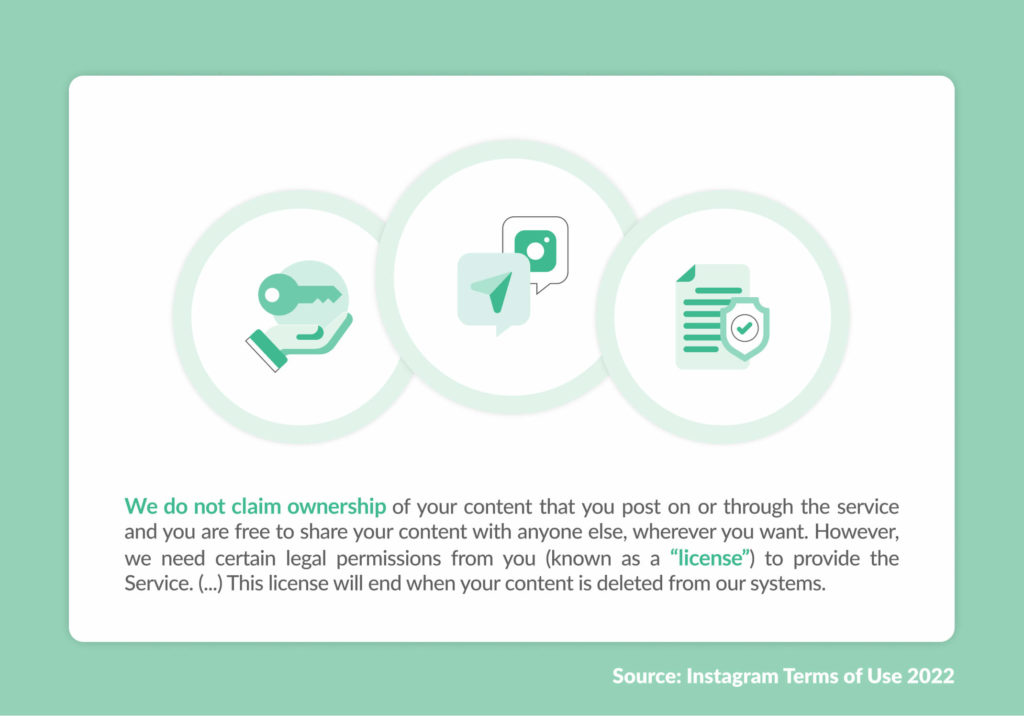
Basically, this means: You remain the owner of your photos and videos, but by posting, uploading or sharing content, you grant Instagram a time-limited license that is valid worldwide. With this, you allow the social media platform “to host, use, distribute, modify, run, copy, publicly perform or display, translate, and create derivative works of your content to host, use, distribute, modify, perform, copy, publicly perform or display, translate and create derivative works from your content (…)” (see Instagram Terms of Use 2022). If you delete your account, the license also expires.
What happens when I violate copyright laws on Instagram?
Instagram plays it safe with its own terms of use. What happens if you don’t take the same legal precautions as the platform before using someone else’s content and accidentally violate copyright laws on Instagram?
If you distribute or publish a copyrighted image without prior consent of the copyright holder, you could face a fine or even imprisonment for up to one year (see § 33 of KunstUhrG). This also applies to reposting other people’s photos. If, in addition, the right to one’s own image is violated or the copyright holder is not named or is named incorrectly in the post, a letter of warning may be the consequence. Civil claims, such as a claim for compensation with payment of legal fees, can also be asserted. So, if you violate copyright, it can quickly become very expensive.
What else is there to consider when using third-party content on Instagram?
To make sure that you don’t find a formal warning in your mailbox in the near future, we will now explain to you in detail what else there is to consider when using third-party content and how not to violate copyright on Instagram.
Explicit vs. implicit approval
Just because content is easily accessible on Instagram, Facebook and the like doesn’t mean you can use that content for your own purposes. Explicit permission from the creator or rights holder is required for utilization and publication of images and other types of visual content production. Explicit permission is given in a written document and gives you explicit permission to use and distribute the content in question. Implicit approval, i.e. consent that is not explicitly expressed and only implied by an action, is not sufficient.
If you use a photo or video that does not originate from the copyright holder, you need written confirmation that all third-party rights (right to one’s own image, trademark and design rights, …) have been respected, necessary permissions have been obtained and any fees have been paid.

Download our fact sheet now and learn how to optimize content production for your brand and reduce costs in no time.
List to comply with copyright on Instagram
All the important tips to keep in mind when it comes to copyright on Instagram are summarized in this list:
- Find out whether the content is copyrighted or not
- For copyrighted content, obtain explicit approval for publishing, distributing, and reposting images, videos, etc.
- For third-party content, obtain a written confirmation that the copyright holder has obtained all rights, paid all fees and not violated any third-party rights
- Always name the copyright holder for third-party content, unless otherwise agreed in advance. Also note any specifications regarding crediting
- If you want to use images with certain licenses, such as Creative Commons licenses or stock photography, always read the guidelines carefully and explicitly follow them
How do I ask for permission to use other people’s images?
Now that you know what exactly you have to consider when it comes to image rights on Instagram and how you can use and publish third-party content in a legally compliant manner, all that’s missing is an example of how you ask for permission to use third-party images.
First things first: As a company in Germany, you are prohibited by the General Data Protection Regulation (GDPR) and the German Unfair Competition Act (UWG) from directly contacting new customers for advertising purposes. You are therefore not permitted to simply write to private individuals by direct message or e-mail. You need prior written consent for this.
However, if you do not want to advertise your company directly via DM or e-mail, but only request the rights to use a photo, you can leave a public comment under the respective post. When making the request, it is important that you ensure, as already described above, that all permissions and fees have been obtained and paid and that no third-party rights have been violated. This way you are on the safe side from a legal point of view and cannot be held responsible if, for example, people depicted on the image complain that the image was reposted or otherwise processed. In this case, liability lies with the creator of the content, since he or she has already agreed to your terms of conditions.
An example of how such a request can look like is our cooperation with KERBHOLZ, a manufacturer of watches, glasses and jewelry. KERBHOLZ requests permission to use the content of private individuals with our User Generated Content Management Tool. The terms and conditions protect the company with regard to copyright, respective third-party rights and license fees. If the user agrees to the terms and conditions, the company can use the content for example as productpage images.
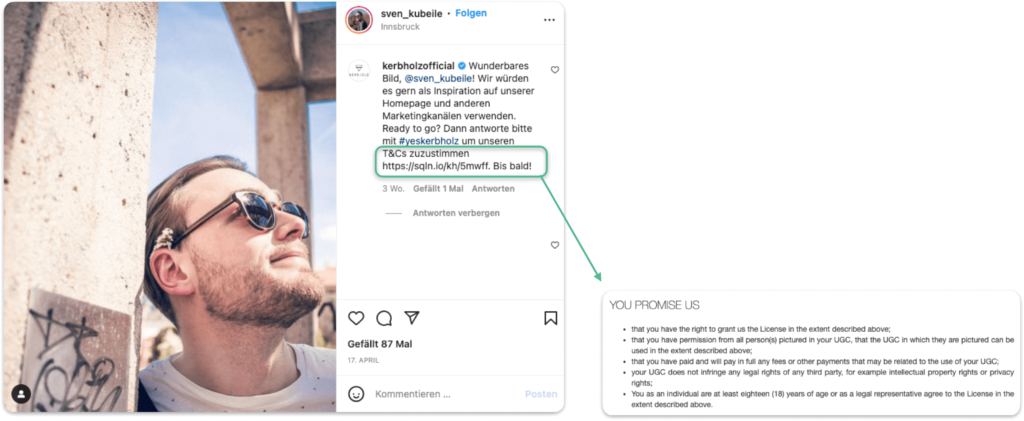
Conclusion
When using third-party content on social media platforms, it happens very easily that copyright is unintentionally violated on Instagram, Facebook and the like. Warnings and fines can be the result.
In order to prevent such legal consequences, it is extremely important to obtain explicit approval for use and distribution of copyrighted images and to always name the rights holder accordingly. Only those who additionally obtain a written confirmation that all license fees and other charges have been paid and that no third-party rights have been violated are on the safe side from a legal point of view.
Those who request third-party visual content on Instagram, Facebook and the like in a legally compliant manner can use this informative and unique content for their own social wall, for example, and thus manage to stand out from their competition in the long term. To learn more about how you can support brand loyalty through content, read our related blog post.
Sources
https://www.bmj.de/DE/Verbraucherportal/DigitalesTelekommunikation/Urheberrecht/UrheberrechtImInternet_node.html
https://creativecommons.org/licenses/?lang=de
https://www.facebook.com/help/instagram/581066165581870
https://www.gesetze-im-internet.de/kunsturhg/BJNR000070907.html
https://www.gesetze-im-internet.de/uwg_2004/
https://eur-lex.europa.eu/eli/reg/2016/679/oj?locale=de

